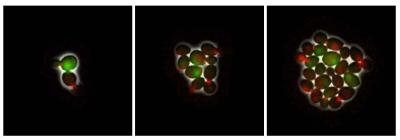Scientists Discover the Origins of Genomic "Dark Matter"

Image

Marylyn Ritchie Honored as an Invited Kavli Fellow for the Third Year in a Row

Image

Short-Term Gene-Expression "Memory" is Inherited in Proteins Associated with DNA, New Research Finds

Image

Using interdisciplinary tools to find cure for human herpesvirus

Image

New Kind of Antibiotic May Be More Effective at Fighting Tuberculosis, Anthrax, and Other Diseases

Image

2013 Myriant Corporation Scholarship Winners Announced

Image

Probing Question: Do Women Dominate the Field of Forensic Science?

Image

Gene Offers Clues to New Treatments for a Harmful Blood Clotting Disorder

Image

Autism Linked to Increased Genetic Change in Regions of Genome Instability

Image

Craig E. Cameron Appointed the Eberly Family Chair in Biochemistry and Molecular Biology

Image
